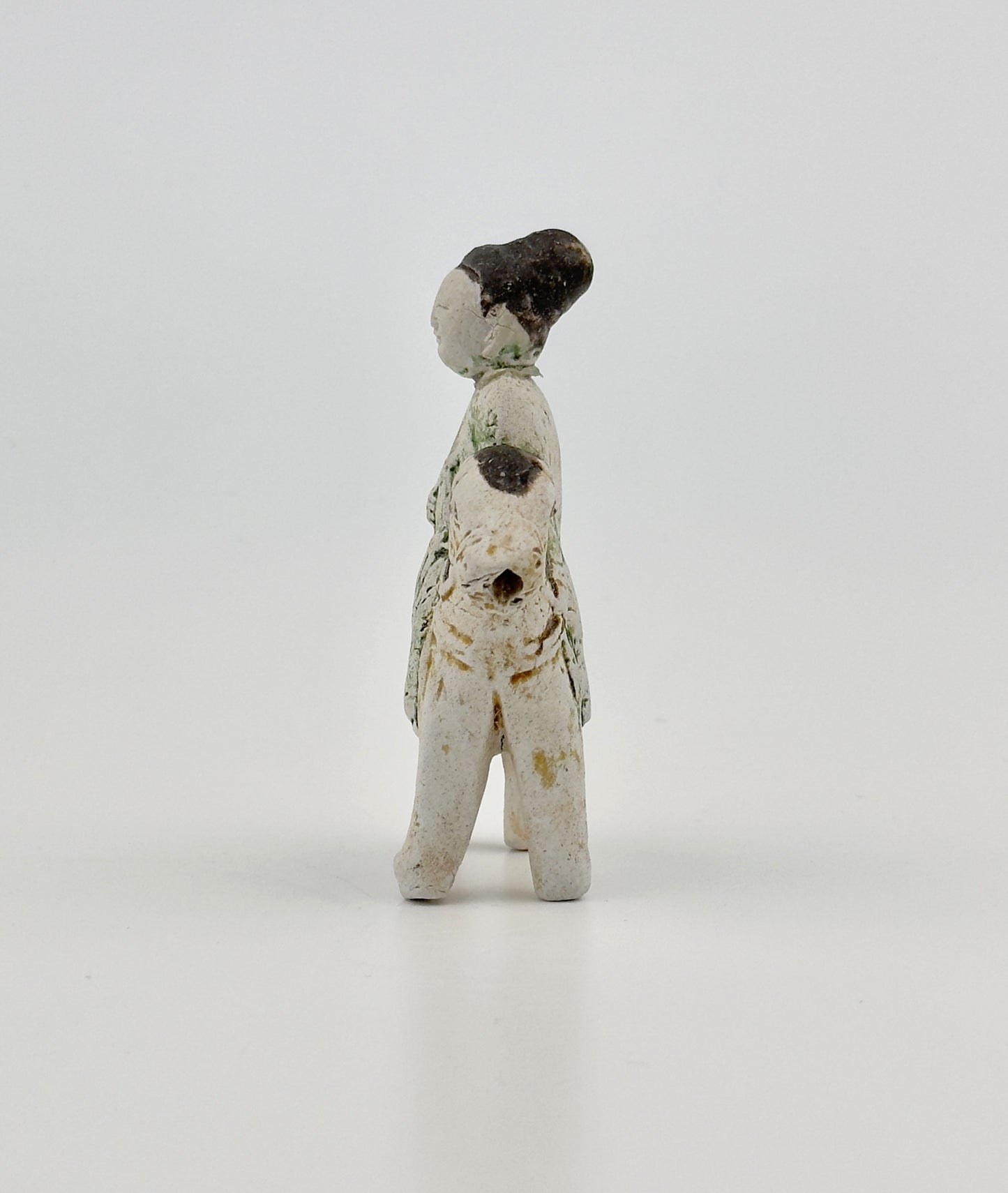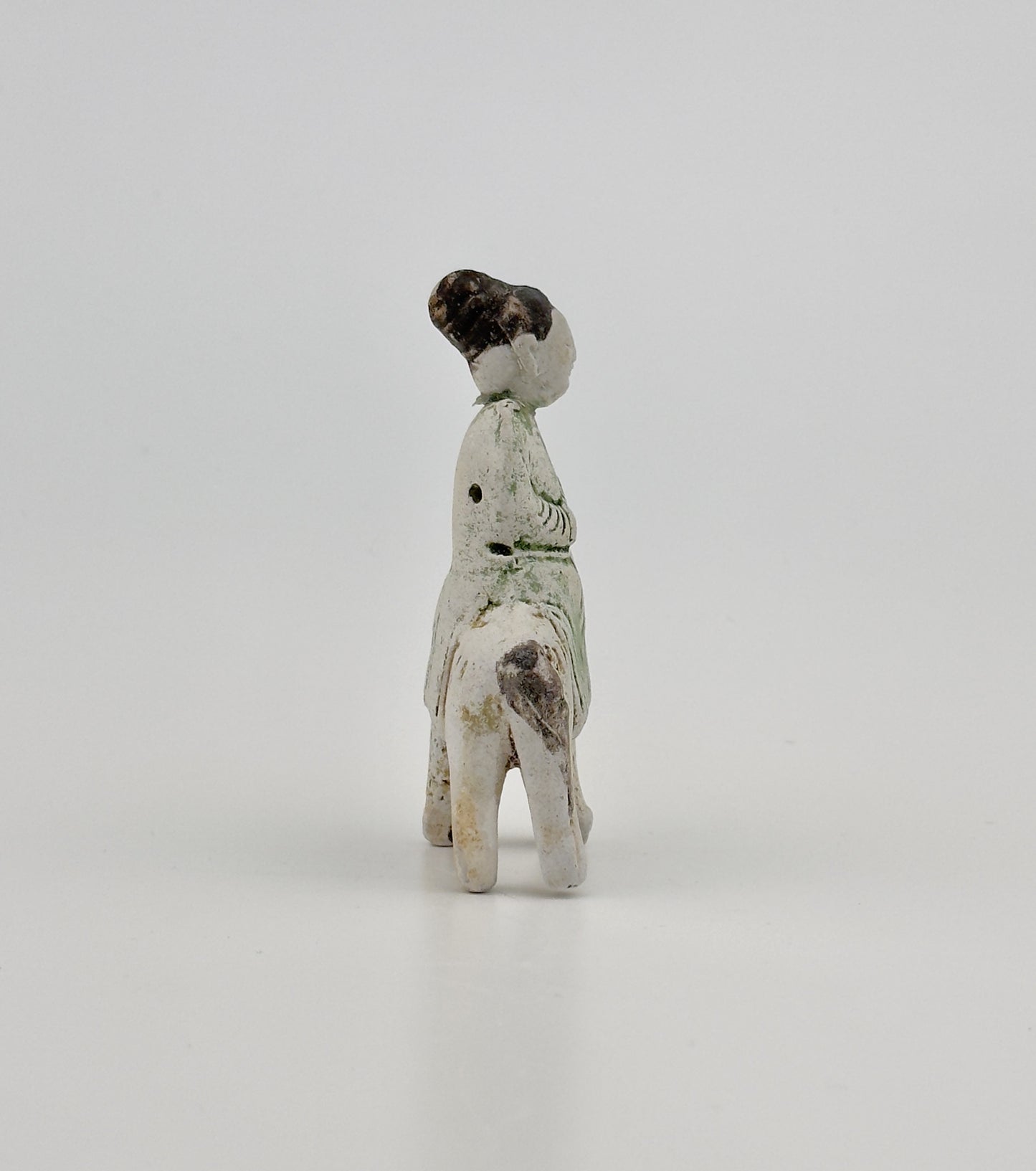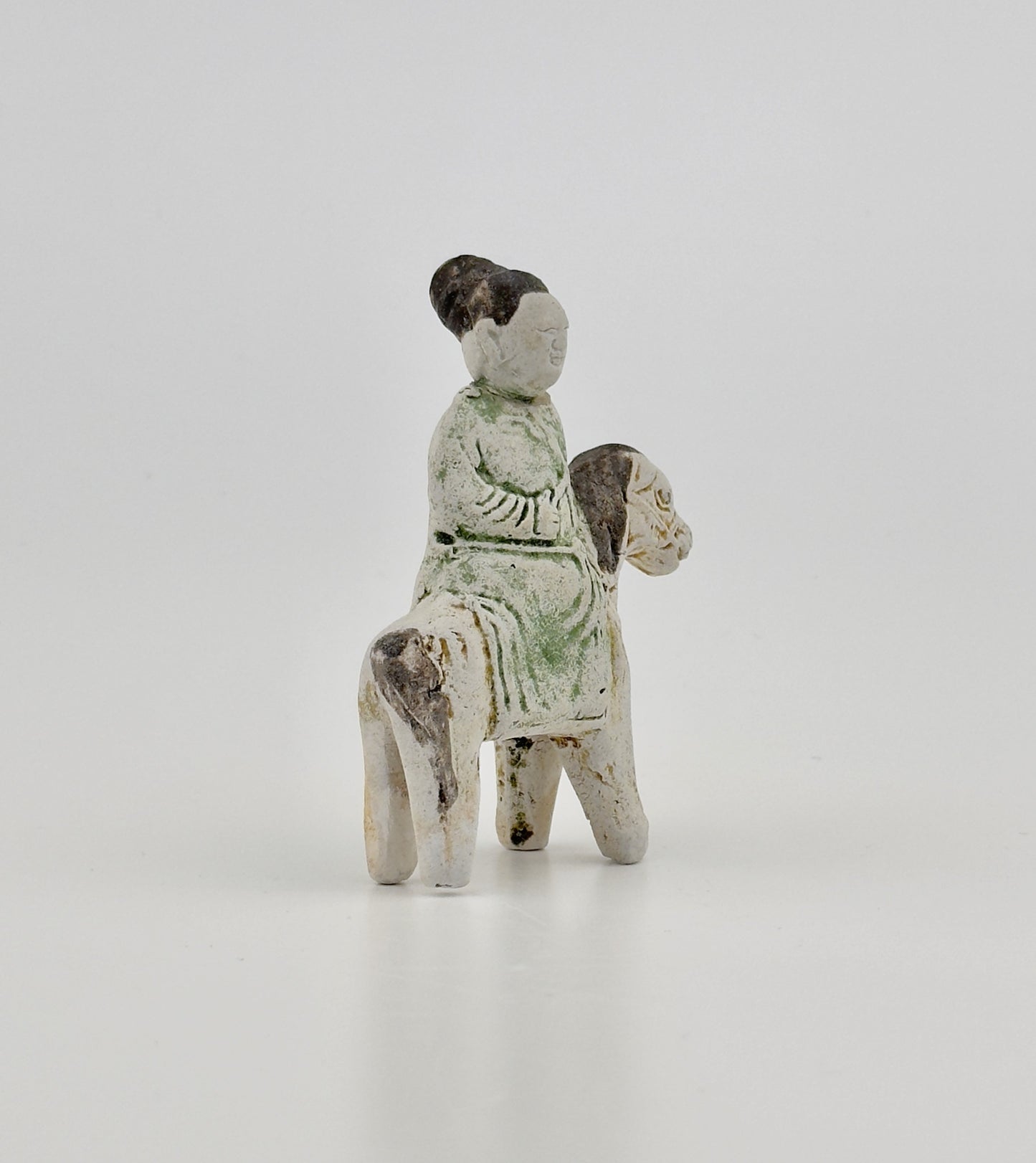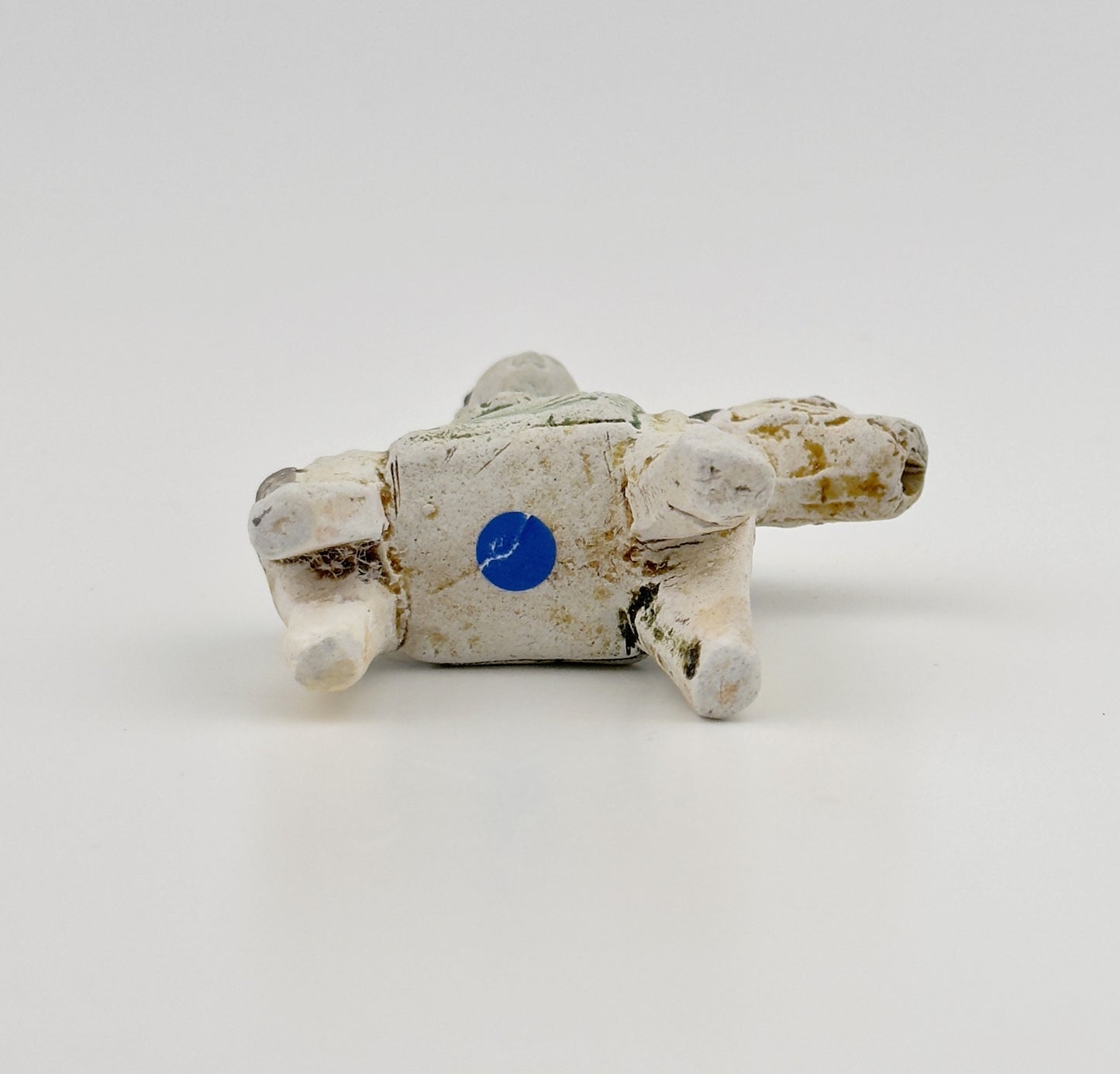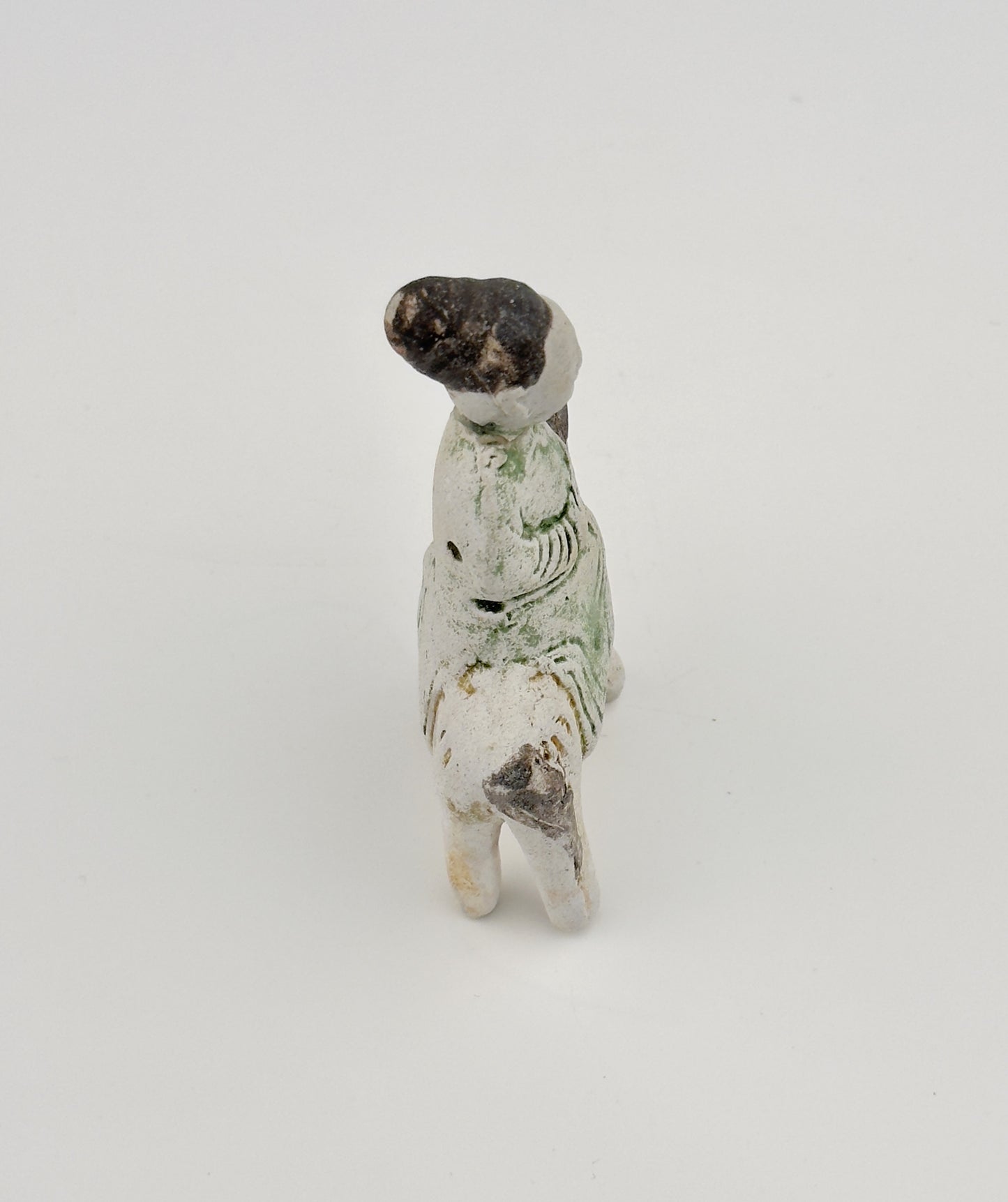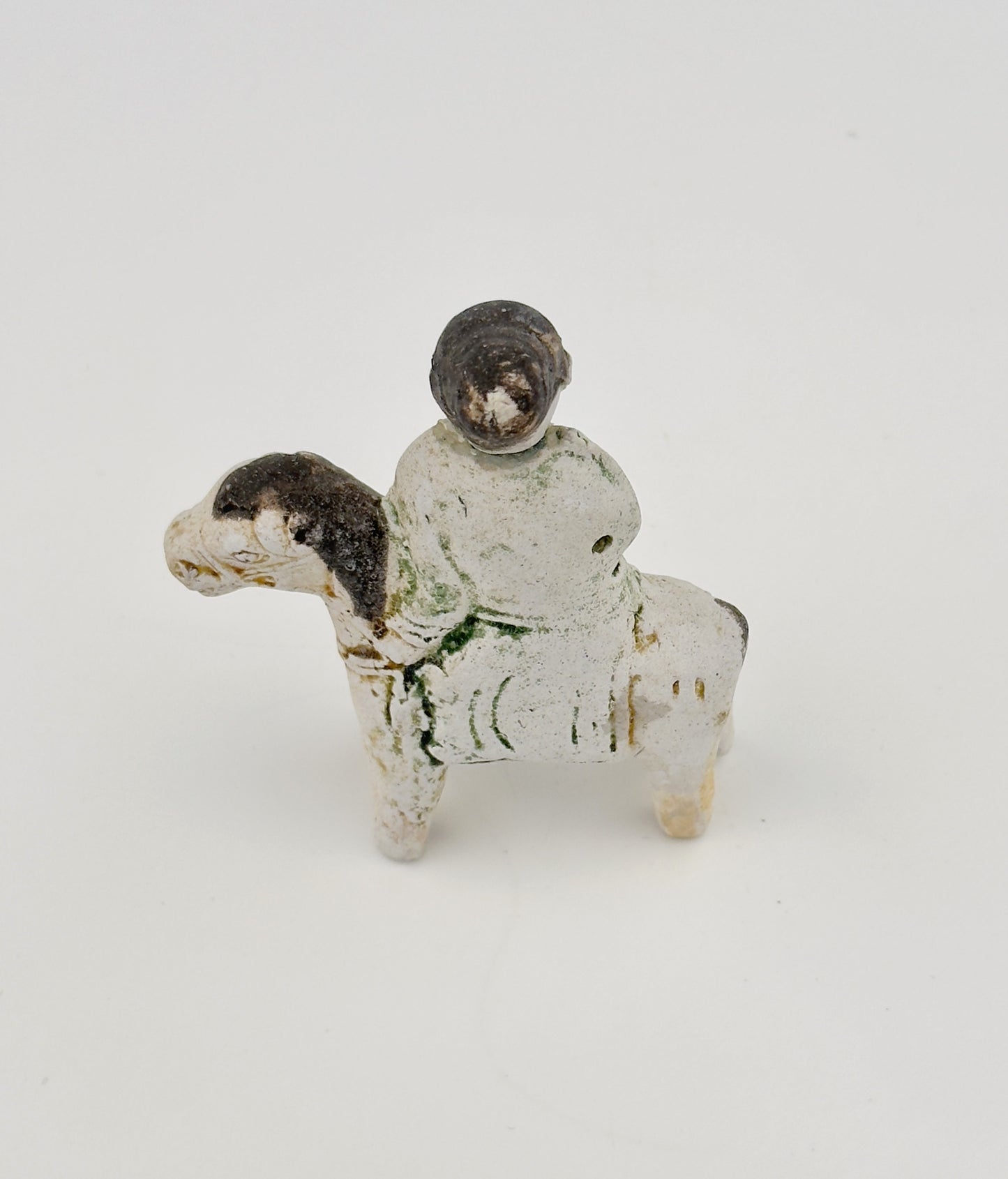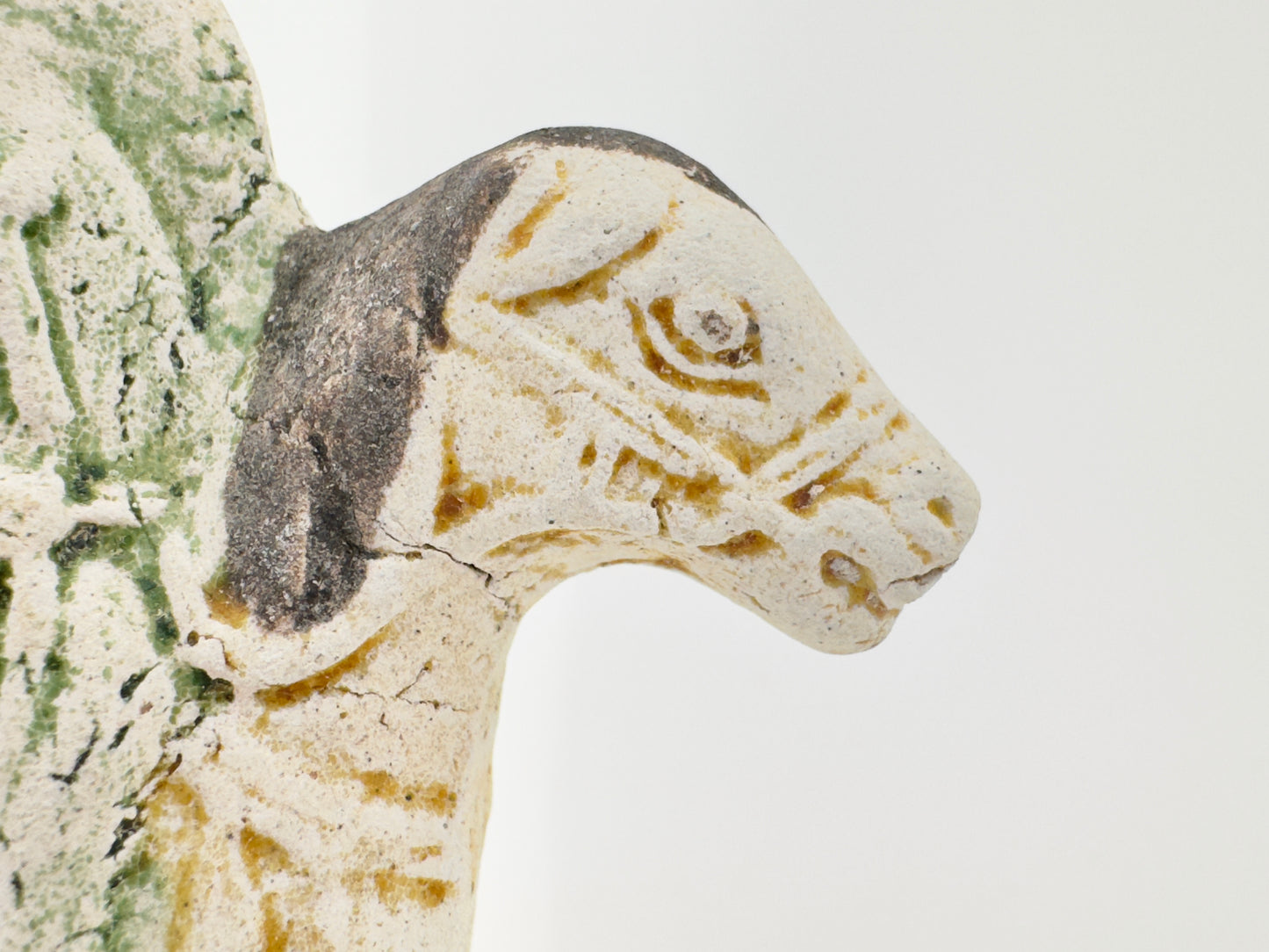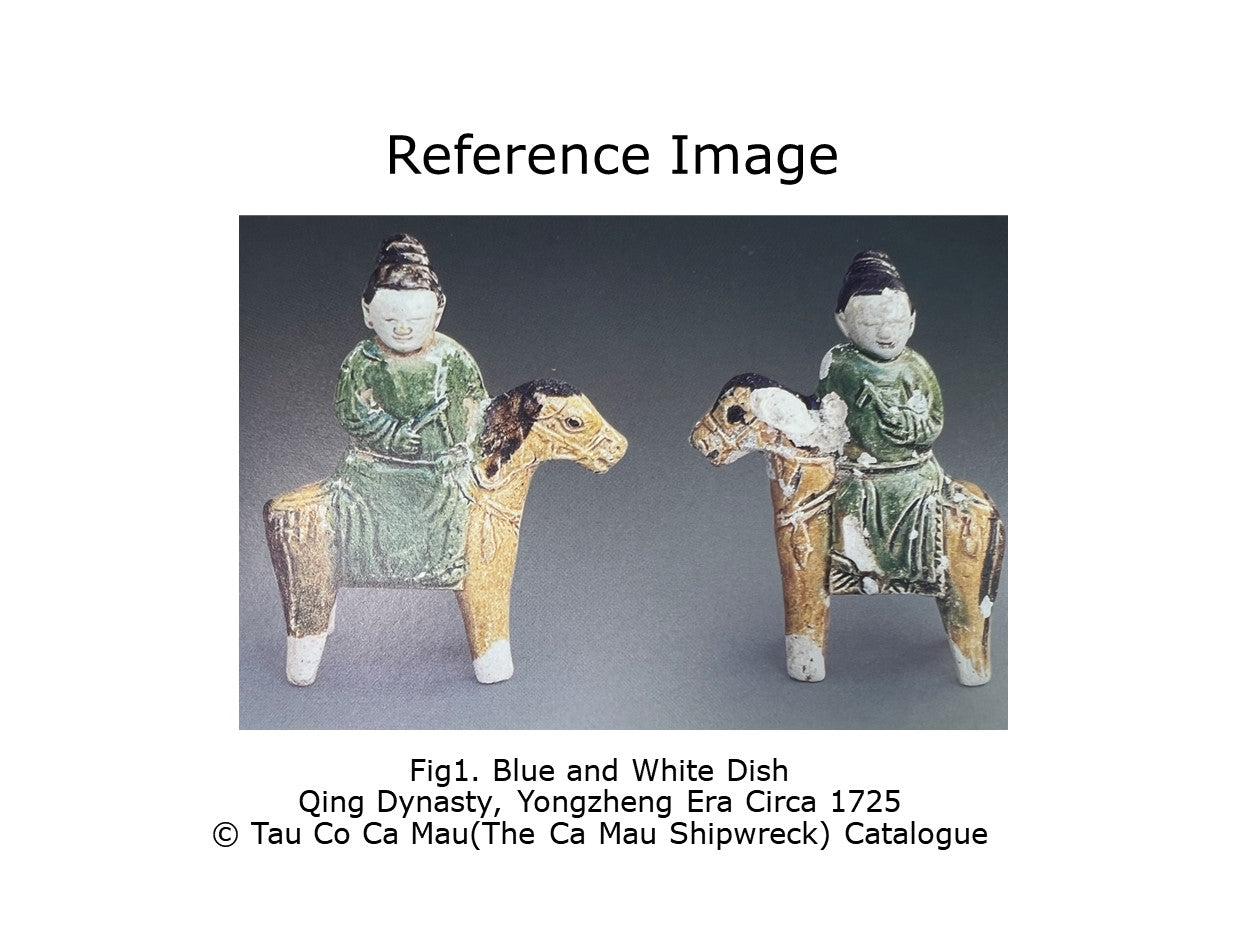AUA Oriental Art
Horse and Rider Figurine c1725, Qing Dynasty, Yongzheng Reign
Horse and Rider Figurine c1725, Qing Dynasty, Yongzheng Reign
Couldn't load pickup availability
A rider wearing an green gown. He is seated side saddle on a yellow painted horse with riding crop in hand. It was worn away on the sea floor.
Period : Qing Dynasty, Yongzheng PeriodProduction Date : C 1725
Made in : Jingdezhen
Destination : Netherland
Found/Acquired : Southeast Asia , South China Sea, Ca Mau ship
Size : 10 cm (Height) x 7cm(Diameter)
Condition : Good(Because it was in the sea, the surface is salty and worn.)
Reference : Double checked with reference to the original catalogues
1) Tau Co Ca Mau(The Ca Mau Shipwreck) Catalogue 2002 / The National Museum of Vietnamese History
2) THE CA MAU SHIPWRECK PORCELAIN : from the Collection of Dr.Zelnik , 2000
3) Sotheby’s Amsterdam, 2007 : Made In Imperial China / Sotheby's
4) Asian Ceramic Found along Maritime Silk Route / National Maritime Museum of Korea
* The Ca Mau Cargo
The Ca Mau Cargo refers to a Chinese cargo sunken sometime between 1723 and 1735 off the coast of Vietnam’s farthest point in the South China Sea, discovered by Vietnamese fishermen in 1998. It is believed the ship was a Chinese merchant’s cargo on its way from Canton (Guangzhou) to Batavia when it caught fire and sank. The merchant had ordered the goods on board for Dutch traders, who had limited access to China and its ports.
* Porcelain for the European Market
The Ca Mau Cargo consisted of numerous types of porcelain, chinaware and blue and white wares, all designed for the European market. Blue and white ceramics recovered from the cargo appear decorated with the so-called ‘Scheveningen landscape’, also known as ‘Deshima décor’. This motif usually depicted a traditional Dutch fishing village, executed in Chinese style. Chinese wares with Western motives were extremely popular and made to order and were known as ‘China de commande’.
Share

